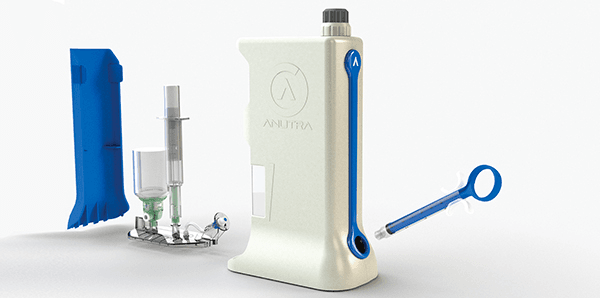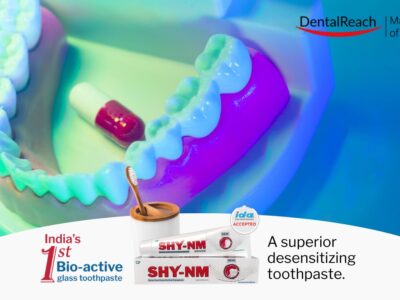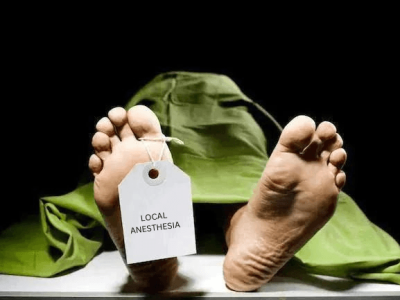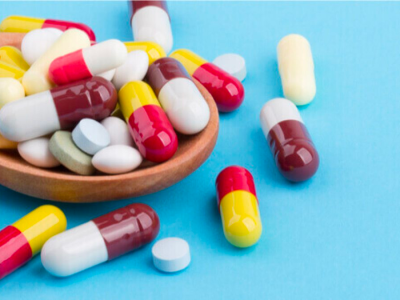Abstract
No oral surgical procedure can be done without local anesthesia. The main aim of local anesthesia is to ensure that dental procedures cause a minimal amount of pain to the patient. But the conventional way of delivering local anesthesia using a syringe and needle appears to increase the patient’s apprehension and anxiety even before the commencement of dental procedures. This has given rise to a number of anaesthesia delivery systems, briefly explained in this article.

Introduction
No matter how perfect your margins are or how secure your occlusal placement is, patients won't understand its benefit immediately. But, if you make them jump when you inject them with LA, they will most definitely remember that! So apart from the best clinical work, it is vital to focus on the most uncomfortable part of our practice – dental anesthesia.
Local anesthesia was discovered in the year 1884 by Karl Kolle. Since Cook developed the current dental syringe about 150 years ago, significant advancements in anesthetic delivery systems have been made. Despite the fact that the standard aspirating syringe is still the most popular way of administering local anesthetics, more recent technologies have been discovered that can help the dentist provide more significant pain relief with less painful injections and minimal side effects. This is of more significance for palatal injections especially because it causes the greatest discomfort to the patients.
The majority of research efforts are aimed at the improvement of anesthetic drugs, delivery systems, and associated techniques.
Computer-controlled Local Anesthetic Delivery Systems (CCLAD)
It is essential to precisely maintain a slower speed and constant rate of injection of local anesthesia in order to avoid any major discomfort to the patient. This was not always possible using conventional syringes, which led to the development of this new delivery system that controls the rate and speed using computer technology.

The development of local anesthetic delivery devices that used computer technology to regulate the anesthetic solution's rate of flow through the needle started in the middle of the 1990s. Numerous clinical investigations using CCLAD devices in dentistry have shown that the increased syringe control and the regulated LA medication flow rates result in a noticeably better injection experience.
Before selecting an appropriate system, it is crucial for the operator to consider the system's design, which takes into account factors like weight, infection control, speed and mode of drug injection, the likelihood of aspiration, etc.
The Wand system (launched in 1997) was the first CCLAD used, and later variations included Wand Plus and CompuDent. Another gadget that differs from the Wand system in that it lacks foot control is the Comfort Control Syringe (launched in 2001).
Advantages:
- Greater tactile sensation
- Consistent flow rates
- Significantly improved injection experience (a two to a three-fold reduction in pain perception)
Drawbacks:
- Some CCLAD systems and bulkier and more cumbersome to be handled by the dental professionals
Examples :
- The Wand system
- Wand Plus and
- CompuDent.
- Comfort Control Syringe
- Single Tooth Anesthesia (STA™)
NOTE: Single Tooth Anesthesia (STA™) uses dynamic pressure sensing technology (DPS) assures that the needle tip is in the proper place and has not moved outside of this area through verbal clues, visual displays, and audio signals. This is especially useful for PDL injections.
Vibrotactile Devices
These devices used the gate control theory of pain management to reduce the fear of needles in patients by simultaneous activation of nerve fibers through the use of vibration.
It’s action is based on the fact that the vibration message is carried to the brain through insulated nerves and the pain message through smaller uninsulated nerves. The insulated nerves overrule the smaller uninsulated nerves, hence the patient feels the vibration more than the pain.

Advantages:
- Suggested reduction in pain perception
Drawbacks:
- Lack of proper research regarding the efficacy in reducing pain and fear
Examples:
- VibraJect
- DentalVibe
- Accupal
Jet Injectors
The idea behind jet injection technology is to use a mechanical energy source to generate pressure strong enough to force a liquid drug through a very small opening and into the subcutaneous tissues without the use of a needle.

Advantages :
- Painless injection
- Less tissue damage
- Faster injection time
- Faster rate of drug absorption into the tissues
Drawbacks :
- Cannot be used for nerve blocks, only infiltration and surface anesthesia are possible.
- Limited effectiveness in dentistry.
Examples :
- Syrijet
- Injex
- Mark II
- MED-JET H III
Safety dental syringes
With the use of these devices, the danger of an unintentional needle stick injury following the administration of local anesthesia, to both doctor and patient can be reduced.

When the needle is removed from the patient's tissues, the sheath on these syringes locks around it, eliminating inadvertent needle sticks.
Advantages :
- OSHA and CDC recommended
Drawbacks :
- User dissatisfaction
- No safer than traditional anesthetic needles
Examples :
- Ultra Safety Plus XL syringe
- UltraSafe Syringe
- HypoSafety Syringe
- SafetyWand™
- RevVac™ safety syringe
Devices for Intra-Osseous Anesthesia
The purpose of intra-osseous anesthesia is to pierce the buccal gingiva and bone close to the tooth to be anesthetized in order to inject the local anesthetic solution into the cancellous bone near the apex of the tooth.

Examples :
Stabident is an intraosseous injection delivery method. However, it has the drawback that it can only be used in visible and easily accessible areas. This is because when providing an intraoral injection, it can be quite challenging to detect the perforation site with the anesthetic needle once the perforator is withdrawn.
X-Tip employs the pilot drill, a hollow tube through which a 27-gauge needle can pass, to get around this. The original drill remains in situ, preventing the need to look for the newly made hole before inserting the needle.
IntraFlow anesthetic device substantially simplifies the intra-osseous injection by utilising a single-step technique that enables entry into the penetration zone, injection, and withdrawal in one continuous step.
Dentipatch
Dentipatch contains 10-20% lidocaine, which is placed on dried mucosa for 2 minutes to achieve topical anesthesia for injections in both maxilla and mandible.

Advantages :
- Easy to apply
- Works rapidly
- Best used in the upper anterior buccal corridor of the mouth
Drawbacks :
- Not equally effective in all areas
- Requires tissues to be completely dry to stick properly.
About the newly released Star Pen!
Star Pen (Woodpecker) is a painless dental anesthesia device with an auto aspiration feature. It is said to adopt intelligent algorithm control with pressure feedback technology to precisely control the speed and pressure of local anesthesia injection resulting in a comfortable and painless experience for patients.

If aspiration is needed during the injection, one can stop the injection in between and do manual aspiration as well. It has got three adjustable injection modes which allow the operator to control the speed and rate of injection as per the requirement.
Advantages :
- Cordless
- Compact and ergonomic
- No disposable consumables
- Audio analgesia option
Drawbacks :
None so far, it has been launched recently and dentists are still exploring it.
Conclusion
The use of local anesthetics has significantly improved dentistry and altered patients' perceptions of dental operations. A lot of research is still going on in order to come up with newer technologies to improve the patient experience. It is mandatory for dental professionals to stay updated regarding all recent advances in the field of dentistry.
The latest dental news and research is just a click away. You can subscribe to our newsletter or visit www.dentalreach.today to know anything and everything about dentistry.
References
1. Saxena P, Gupta SK, Newaskar V, Chandra A. Advances in dental local anesthesia techniques and devices: An update. Natl J Maxillofac Surg. 2013 Jan;4(1):19-24.
2. Milgrom P, Weinstein P, Getz T. 2nd ed. Seattle (WA): Continuing Dental Education, University of Washington; 1995. Treating fearful dental patients. A patient management handbook.
3. Ogle OE, Mahjoubi G. Advances in local anesthesia in dentistry. Dent Clin North Am. 2011;55:481–99.

















Comments